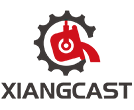Welcome to Changsha Xiangcast Technology Co., Ltd
Welcome to Changsha Xiangcast Technology Co., Ltd
Recent Posts
Essential Insights on Coal Mill Wear Parts for Optimal Performance
Release time:
Jan 20,2025
In the realm of heavy machinery and metal tools, understanding the significance of coal mill wear parts is crucial for achieving optimal performance and extended equipment lifespan. Coal mills play a vital role in the power generation and cement industries, as they grind coal into a fine powder for combustion. Over time, the components within these mills endure substantial wear and tear due to the

Coal mill wear parts typically include grinding rollers, grinding tables, and certain liners. These components are designed to withstand high pressures and resist wear caused by the continuous grinding action. Selecting the right materials for these wear parts is fundamental, as it directly impacts the efficiency and productivity of the coal milling process. Common materials used for wear parts include high chromium white iron, which offers excellent abrasion resistance, and composite materials that combine strength with lightweight properties.
One of the common issues faced in coal mills is the uneven wear of these components, which can lead to performance inefficiencies. This can result in costly downtime and repairs. Regular monitoring and maintenance of wear parts are essential in mitigating these risks. Operators should establish a routine inspection schedule to assess the condition of the grinding rollers and tables, checking for signs of wear or damage. By addressing these issues proactively, operators can avoid significant disruptions to their operations.
Another critical aspect of managing coal mill wear parts is ensuring proper alignment and calibration. Misalignment can lead to uneven wear and increased energy consumption. It is imperative to follow manufacturer guidelines and utilize precision tools during installation to maintain the correct alignment of all components.
Investing in high-quality coal mill wear parts can lead to improved operational efficiency and reduced maintenance costs. While the initial investment may be higher, the benefits of longer-lasting components and less frequent replacements can result in significant savings over time. Additionally, operators should keep abreast of innovations in material science, as advancements in wear-resistant materials may provide further benefits in terms of durability and performance.
In summary, understanding coal mill wear parts, their functions, and best maintenance practices is vital for any operation relying on coal milling equipment. By focusing on the quality of these components and implementing a proactive maintenance strategy, operators can enhance the efficiency and reliability of their coal mills, ultimately leading to smoother operations and increased profitability.
keywords
Contact Us
Tel: +86 17373114083
E-mail: Becky@xiangcast.com
info@xiangcast.com
Address: Haichuang Technology Industrial Park, Yuelu District, Changsha, Hunan, China




